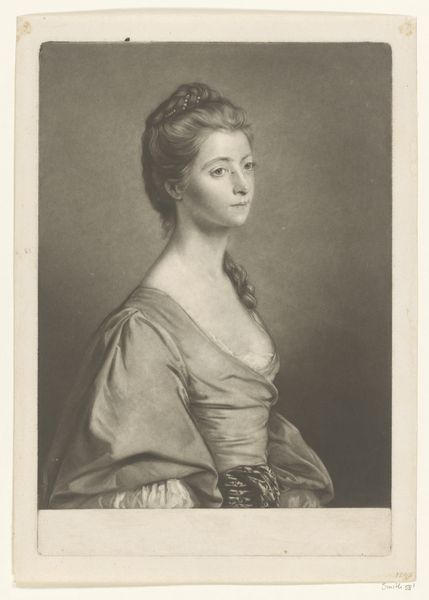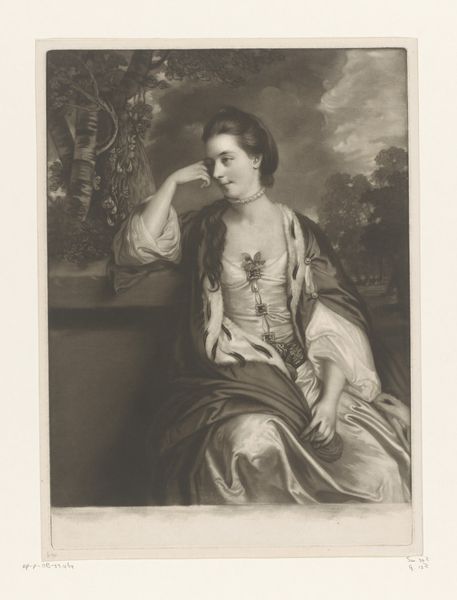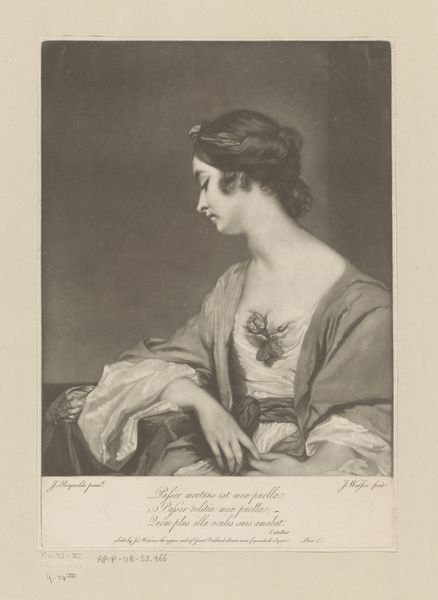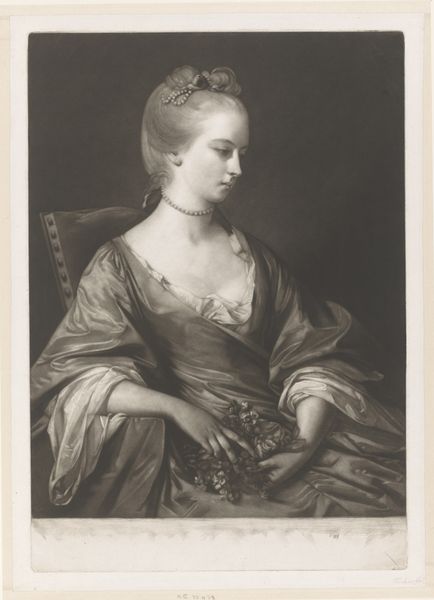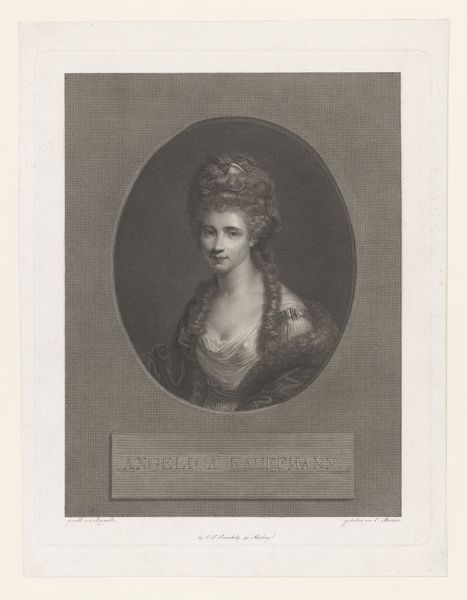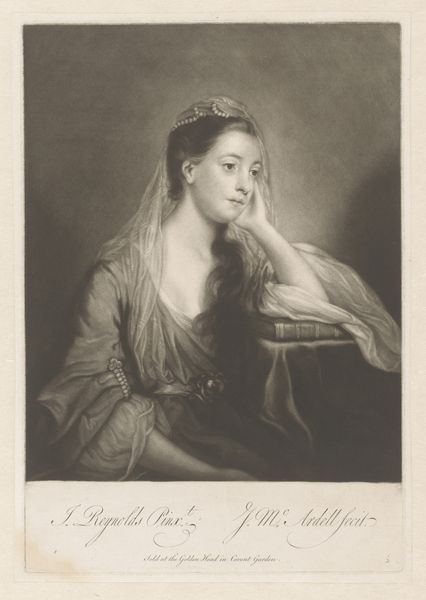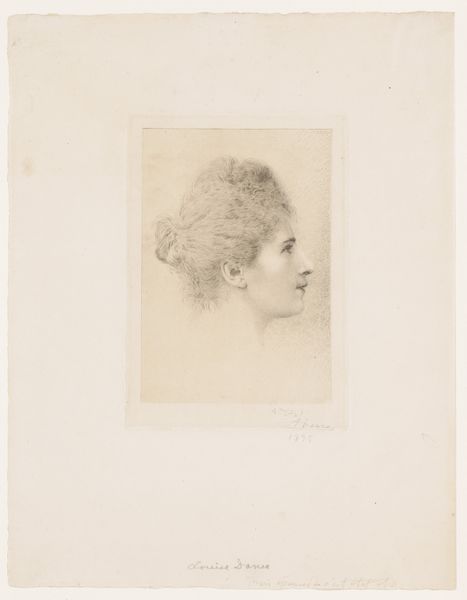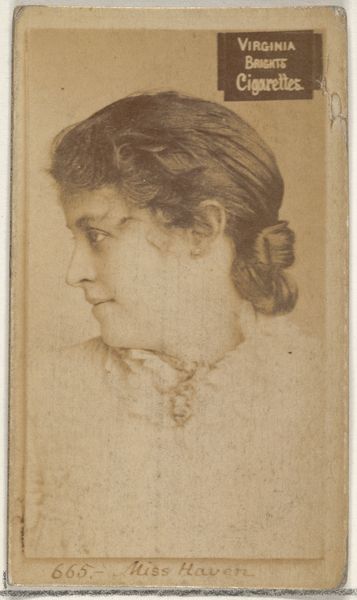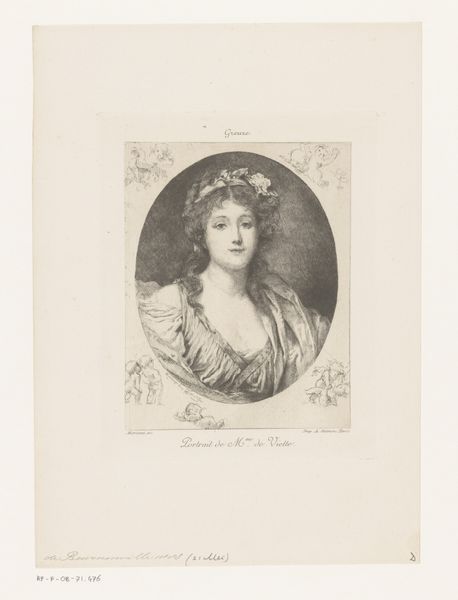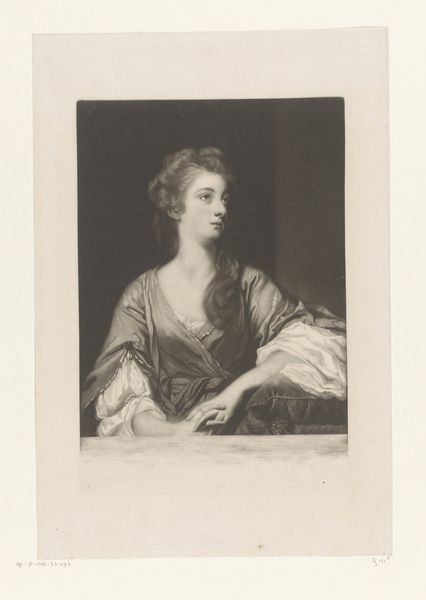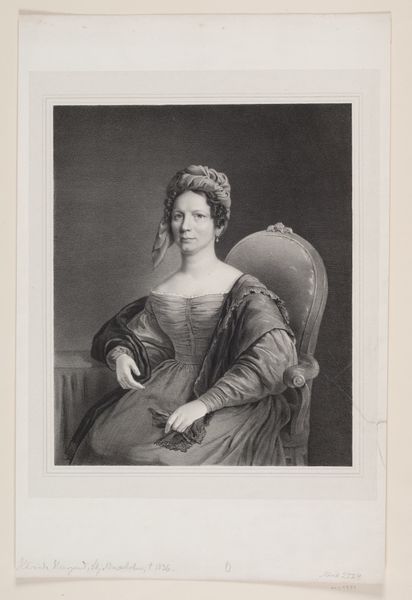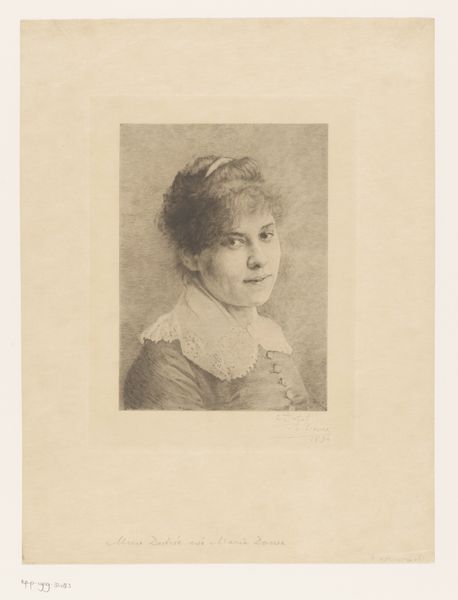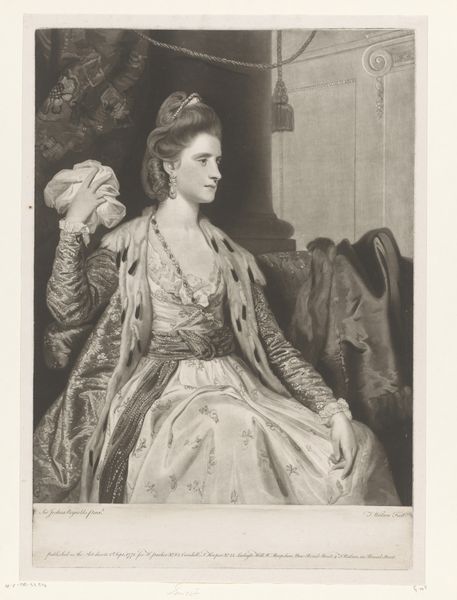
Dimensions: height 394 mm, width 286 mm
Copyright: Rijks Museum: Open Domain
Editor: This is James McArdell's "Portrait of Maria Walpole," created in 1762 using pencil. The rendering is just so elegant, a soft, hazy effect created with line. What does this piece tell you? Curator: This drawing allows us to glimpse into the societal expectations and artistic conventions surrounding portraiture in the 18th century. These weren't merely depictions; they were carefully constructed images reflecting the subject's status and the artist's skill. It speaks to the increasing importance of individual representation in an era of emerging bourgeois culture. Have you thought about the role that institutions played at the time in making portraits such as this important to culture and society? Editor: You're right, it feels so performative, a statement, not just a likeness. Almost like these portraits codified who was important and who wasn't. Did artistic academies affect the creation of portraits like this? Curator: Absolutely! Academies promoted specific styles and techniques, often emphasizing idealization and decorum. This drawing, with its refined lines and emphasis on Maria Walpole's features, aligns with those academic ideals. But there’s always tension between artistic convention and individual expression. The politics of imagery are always at play. Editor: So, understanding the historical context allows us to look beyond just the pretty face and see it as a commentary on societal values and power dynamics. It isn't only about aesthetic beauty; it's also about reinforcing existing social hierarchies and cultural norms. Curator: Precisely! By critically analyzing art within its socio-historical context, we gain a much richer understanding of its meanings and its role in shaping public perceptions and attitudes. Considering patronage can further unveil its social function, it being an intimate, yet public, declaration. Editor: I will remember that -- consider patronage, consider context, consider social status. Thank you for the insight.
Comments
No comments
Be the first to comment and join the conversation on the ultimate creative platform.
